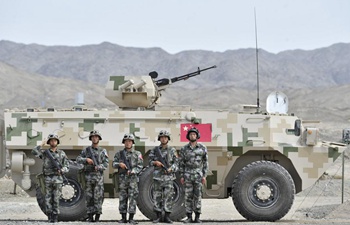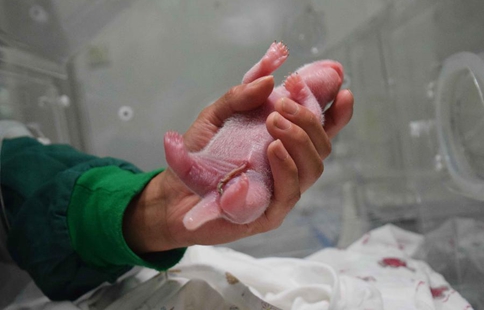SAN FRANCISCO, Aug. 1 (Xinhua) -- New research suggests that a 5 percent drop in the number of U.S children ages 2 to 11 inoculated against the measles, mumps and rubella (known as MMR) would triple the number of annual measles cases in this age group.
The additional measles cases would increase annual public health expenditures by at least 2.1 million U.S. dollars, or 20,000 dollars per case of measles.
"We focused on measles as a case example of the effects of declining vaccine coverage because it is highly infectious," said Nathan Lo, lead author of the study and an MD-PhD student at Stanford University. "It's likely to be the first infectious disease causing outbreaks if vaccination declines."
Published in JAMA Pediatrics, a journal of the American Medical Association (AMA), the study was conducted by researchers from Stanford University School of Medicine in Northern California and Baylor College of Medicine in Texas.
Across the United States, several regions are near the threshold of 90 percent to 95 percent coverage of the MMR vaccine needed to prevent outbreaks of the related three diseases.
Although vaccination has been successful at controlling measles, a few dozen to a few hundred cases occur every year in the United States, usually when Americans travel abroad and unknowingly bring the virus home.
Lo analyzed MMR vaccination data from the U.S. Centers for Disease Control and Prevention (CDC). He constructed a mathematical model from the data to predict the effects of declining vaccination rates in children ages 2 to 11, simulating about 10,000 scenarios that could occur as measles is introduced by returning travelers into different locations around the country at a rate similar to that of recent years.
Researchers also estimated the costs caused by declining vaccination rates if children younger than 2 were included in the models -- a scenario that would further increase the predicted public health costs, by 400,000 dollars per year.
The costs are for measles alone, and do not include other infectious diseases that may rise with lower vaccination coverage, such as mumps and pertussis, and they include some health care expenditures and outbreak-containment tasks, such as tracking and vaccinating those whom infected people contacted, but not the costs of hospitalization or days of work missed by parents of ill children.
Children ages 2 to 11 now account for about 30 percent of U.S. measles cases, meaning that the impact of declining vaccination rates would be significantly larger than the figures predicted in this study if all age groups were considered.
All 50 states in the United States now require the MMR and other childhood vaccinations prior to enrollment in elementary school or day care. In all states, children can be exempted from vaccination for medical reasons. All but three states also allow parents to decline vaccination for religious reasons, and 18 states have exemptions for personal beliefs.
"I think our study is a wake-up call for what we can expect in the coming months and years as vaccine coverage rates continue to decline in the 18 states that now allow non-medical or philosophical belief exemptions," senior author Peter Hotez, dean of the National School of Tropical Medicine at Baylor, was quoted as saying in a news release from Stanford.

















